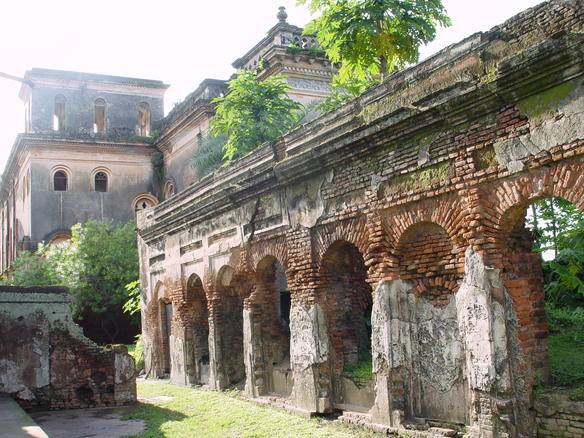Puthia Raj Family on:
[Wikipedia]
[Google]
[Amazon]
 The Puthia Raj family was created by the
The Puthia Raj family was created by the
Temples of Puthia
{{Nobility of the Raj Rajshahi District 1950 disestablishments in Pakistan Zamindari estates Quasi-princely estates of India Bengali zamindars 1612 establishments in India Hindu families Bengali Hindus Bangladeshi Hindus
 The Puthia Raj family was created by the
The Puthia Raj family was created by the Mughals
The Mughal Empire was an early modern empire in South Asia. At its peak, the empire stretched from the outer fringes of the Indus River Basin in the west, northern Afghanistan in the northwest, and Kashmir in the north, to the highlands of pre ...
in the early seventeenth century and is one of the oldest feudal estate
A fief (; ) was a central element in medieval contracts based on feudal law. It consisted of a form of property holding or other rights granted by an overlord to a vassal, who held it in fealty or "in fee" in return for a form of feudal allegia ...
s of Bengal
Bengal ( ) is a Historical geography, historical geographical, ethnolinguistic and cultural term referring to a region in the Eastern South Asia, eastern part of the Indian subcontinent at the apex of the Bay of Bengal. The region of Benga ...
. A lord named Nilambar received the title of Raja
Raja (; from , IAST ') is a noble or royal Sanskrit title historically used by some Indian subcontinent, Indian rulers and monarchs and highest-ranking nobles. The title was historically used in the Indian subcontinent and Southeast Asia.
T ...
(''King'') from the Emperor Jahangir
Nur-ud-din Muhammad Salim (31 August 1569 – 28 October 1627), known by his imperial name Jahangir (; ), was List of emperors of the Mughal Empire, Emperor of Hindustan from 1605 until his death in 1627, and the fourth Mughal emperors, Mughal ...
(reigned 1605-1627 CE). In 1744, the region was divided between King Nilambar's sons and the Puthia Raj family was born. The family built lavish palaces and temples, such as the Puthia Temple Complex, and were noted philanthropists. Later the Puthia Raj estate was maintained by Lahiris until the abolition of the zamindar
A zamindar in the Indian subcontinent was an autonomous or semi-autonomous feudal lord of a ''zamindari'' (feudal estate). The term itself came into use during the Mughal Empire, when Persian was the official language; ''zamindar'' is the ...
i system under the newly formed democratic Government of East Pakistan after passing of the East Bengal State Acquisition and Tenancy Act of 1950
The East Bengal State Acquisition and Tenancy Act of 1950 was a law passed by the newly formed democratic Government of East Bengal in the Dominion of Pakistan (present day Bangladesh). The bill was drafted on 31 March 1948 during the early yea ...
, just two years after the fall of the British Raj
The British Raj ( ; from Hindustani language, Hindustani , 'reign', 'rule' or 'government') was the colonial rule of the British The Crown, Crown on the Indian subcontinent,
*
* lasting from 1858 to 1947.
*
* It is also called Crown rule ...
. The palaces are currently administered by the Government of Bangladesh.
Notable members
* Saratsundari Devi *References
External links
Temples of Puthia
{{Nobility of the Raj Rajshahi District 1950 disestablishments in Pakistan Zamindari estates Quasi-princely estates of India Bengali zamindars 1612 establishments in India Hindu families Bengali Hindus Bangladeshi Hindus